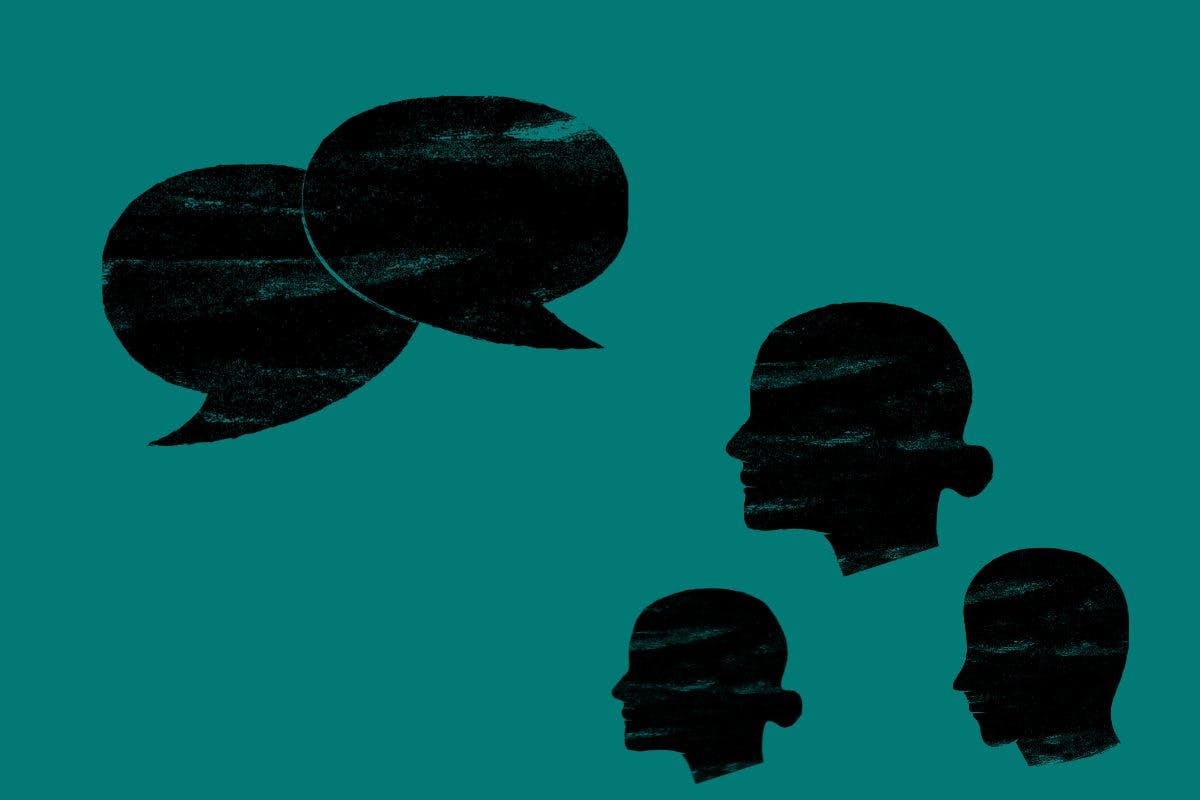Published: 13 January 2023
Last updated: 5 March 2024
ITTAY FLESCHER considers how a photo of a Muslim and a Jew snapped at Ben Gurion airport captured the politics and yearnings of hundreds of thousands of people.
Adi Scheffer didn’t set out to create the first viral picture of 2023. She was just waiting for a flight at Ben Gurion airport when she noticed two women praying in opposite directions.
The peaceful image of a Muslim and Jew at prayer was so appealing she snapped a picture and sent it to her friends.
Within 24 hours, close to half a million people had seen the picture across Israel and the world as it went viral on social media.
The enthusiasm with which it was received showed the deep longing many people feel for positive images of Israeli and Palestinian coexistence.
In Israel, popular author and comedian Hanoch Daum introduced it with the words: “I was sent this lovely picture from Ben Gurion airport this morning. I wish our lives would be this simple.” The post had 17,000 likes. The most liked comment from the thousands posted was by Hasbara activist Yoseph Hadad, who simply wrote, “This is Israel.”
Jerusalem author Sarah Tuttle-Singer also shared the photo with the English caption (quoting me) that read, “In between Mecca and Jerusalem, this happened today.” This post had 811 likes.
It wouldn’t be Jewish if everyone agreed on the beauty of the image. Some Orthodox Jews suggested the photo was impossible because Mecca and Jerusalem are both south-east from the airport. Others responded that perhaps the Jewish woman was saying tehillim (psalms), for which one isn’t required to face Jerusalem.
Some raised concerns about privacy, contending that taking photos of people in conversation with their maker without their consent is not something that should be celebrated.
Some complained about the lack of a non-denominational prayer space at Ben Gurion, while others loved that Israel’s national airport is so filled with prayer in public spaces.
The photo also prompted political conversations with far-reaching implications.
While some Palestinians were moved by the image of equality, others asked whether the two women spent the same time at security, lamenting the racial profiling of Arabs at Ben Gurion airport, especially on Israeli airlines.
One Jewish woman pointed out, “Only 44 minutes away, at the Kotel, a Jewish woman arriving wishing to read Torah with a minyan of other women, would have a group of ultra-Orthodox of both sexes stopping her.”
As the conversation thread went on and the picture started appearing everywhere on Facebook and twitter, Tuttle-Singer wrote another post saying,
“I love the pic and I shared it, (yet I’m) also, seeing folks using this image to talk about how this is proof Israel doesn’t have a racism problem ….
To every Israeli Jew sharing the photo of a Muslim woman and a Jewish woman praying together -
I hope you are as willing to fight for equal rights between our communities as readily as you’re willing to share a beautiful photo.”
Maale Adumim resident Avi Eisenman added, “Anyone who sees this and concludes that Israel must have no issues with racism is severely lacking in their critical thinking and ability to draw logical conclusions. Israeli society has a lot of work to do to improve on this front. No doubt about it.
“At the same time, I see it as perfectly legitimate to use this picture to counter the hyperbolic propaganda of extreme anti-Israel activists who paint Israel as a hellish place so saturated with racism that this type of interaction is just not possible.”
Generating more commentary and sub threads than a page of Talmud, it would be safe to assume that this picture will appear again in our news feeds in years to come, especially at times of war.
Seeing the image used as a springboard for discussion about everything from halachic debate about prayer, gender, politics, human rights, inequality and history lessons that went all the way back to the status of Jews under the Pact of Omar was remarkable.
It affirmed yet again the timeless quote from American novelist Anaïs Nin: “We often don’t see things as they are, we see them as we are.”




